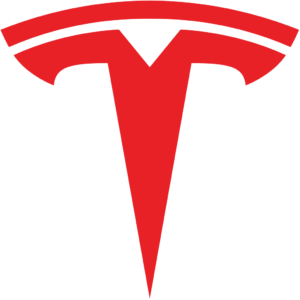How Desperation Stimulates Short-term Rational Thinking…. and Long-term Demise
NOTE: This blog was written in the first two weeks of April, 2020. As such, it cannot and does not anticipate the full effect of the COVID-19 pandemic on the US and global auto industry. Stay tuned…..
In this series of eleven blogs, we will discuss the current situation in Detroit with the traditional “Big 3” – Ford, GM, and Fiat Chrysler (FCAU) – and their upstart rival Tesla. The series will end with specific recommendations as to what the Big 3 must do to survive against Tesla and other electric vehicle manufacturers. The eleven blogs in this series are:
- The Detroit Big 3’s current woes, Part 1
- The Detroit Big 3’s current woes, Part 2
- A brief history of the Big 3’s electric vehicle attempts, Part 1, GM
- A brief history of the Big 3’s electric vehicle attempts, Part 2, Ford
- A brief history of the Big 3’s electric vehicle attempts, Part 3, FCAU and General Big 3 Summary
- What’s so special about Tesla — Part 1, financials and battery performance
- What’s so special about Tesla – Part 2, manufacturing, and cost/time reduction
- What’s so special about Tesla – Part 3, coming Tesla models, etc.
- What’s so special about Tesla – Part 4, Tesla versus emerging competitors
- Why Tesla so successful……..the Company; the Cars
- What’s a poor Big 3 auto company to do now?
What’s so special about Tesla – Part 4, Tesla versus emerging competitors:
The only way the Big 3 have ever made any money is on large vehicles that are priced at the high end of the market. Consider that pickups used to be low to medium priced utilitarian vehicles. This is no longer the case. Now $55,000 to $70,000 MSRP crew cab luxury pickups are as likely to be driven by a suburban Mom as the man of the family.
Tesla has always offered free battery charging at its Supercharger stations for Model S and X owners as long as they own their vehicles. Can you imagine any Big 3 manufacturer giving their large SUV and pickup truck customers free fuel for the duration of their vehicle ownership? Ford alone sells about 900,000 F-series pickups a year. Assume for round numbers each drives an average of 20,000 miles per year and gets an average of 20 miles per gallon, and that an average gallon of gas/diesel fuel is $2.50 a gallon. If Ford gave just one year of F series pickup buyers free fuel to match Tesla’s “fuel” commitment to its Model S and X owners, it would cost Ford $2.25 Billion. Obviously, that would not be possible, even if Ford doubled their trucks’ mileage to 40 mpg, or the average price of gas/diesel fuel was halved. Under the above scenario, over the ten year life of an average one-owner pickup, Ford would pay each owner $25,000 in fuel reimbursement. Impossible – mostly due to the poor thermal efficiency of a gas or diesel-powered internal combustion engine compared with that of electric motors, and the recent cost of the energy that powers each.
Now imagine how easy it would be – a small change in software code — for Elon Musk to extend his free supercharging to all Tesla owners. Few people take long road trips very often. Most people with electric vehicles recharge at home every night. Given the continually declining cost of electricity, especially if Tesla’s Supercharger stations are either partially or fully solar-powered, this “freebie” might not be a prohibitively costly move for Tesla when compared to the annual billions Detroit’s Big 3 spend on advertising. Or, perhaps Musk could offer any Tesla owner free “lifetime” charging for a flat upfront fee of, say $3,000 or $5,000 per Tesla vehicle, or even for every Tesla in a family! Finance that in with your acquisition cost, and you could probably drive for no financial “fuel” outlay forever. ICE-powered vehicle manufacturers increasingly have no way to compete with electric vehicles.
Tesla is already crushing the car market in Europe, particularly the market for low to mid-range Audis, BMWs, and Mercedes. This despite currently having no production capability in Europe and suffering the usual logistics complications getting its vehicles there. In Europe, sales of battery-powered electric cars in 2019 grew by 81% over 2018. In its short time available in Europe, Tesla’s Model 3 in particular has risen to or near the top of most European countries’ sales charts, despite being over $10,000 more expensive than the smaller battery-powered electric vehicles that dominate the volume end of the market – vehicles such as Renault’s Zoe, Peugeot’s e208, VW’s e-up!, and Hyundai’s Kona Electric. Indeed, Tesla’s Model 3, new to the European car market, was runner up to Renault’s Zoe in last year’s European Car of the Year contest, beating out car models from the likes of Ford, Toyota, BMW, and Porsche.
When Tesla’s new Giga Berlin factory gets rolling, the traditional German automakers – VW, BMW, and Mercedes Benz – will find that their European sales, already affected by Tesla’s Model 3 recent sales in Europe, continue their decline. With the exception of VW, the German manufacturers are stuck with the same denial of electric vehicles’ benefits, and with their dreams of selling ICE-powered vehicles into eternity.
VW, led by the very “with it” and capable CEO Herbert Diess, knows what it has to do. But VW is a huge ship to turn, particularly since it has historically had such a top-down autocratic and bureaucratic culture for so long. They have excellent automotive and production engineering talent, but can they move quickly enough to be effective and to become one of a few dominant players in the electric vehicle market? Currently, VW’s new ID.3 is bogged down with vehicle software problems, the bane of every other car company in the world but Tesla. Thousands of newly produced ID.3s are parked because their software is so unworkable that the cars cannot be sold.
One of the reasons an ICE-powered vehicle manufacturer can’t compete against an electric vehicle is due to the vast reduction in parts count for the content of an electric vehicle vis-à-vis an ICE-powered vehicle. It is often said that an internal combustion engine and automatic transmission has about 2,000 parts, and an electric motor/(single speed) gearbox only 20 moving parts. Obviously more parts mean more cost and complexity, not only in the vehicle itself, but every extra or unnecessary part ripples through the entire manufacturing organization in many deleterious ways. We will be covering this subject in more detail in a future blog.
Tesla has many electric vehicle potential rivals currently in start-up mode. One of the more promising of these is Rivian, based in Plymouth, Michigan. Rivian has created two prototypes that have stirred up strong interest by potential buyers – the R1T pickup, and the R1S large Suburban-like SUV, both powered by Rivian’s version of a “skateboard” platform, featuring front and rear electric motors and the ability for all four wheels to drive independently. Such is the strength of Rivian’s management and planning that they have been successful in attracting large amounts of capital, $500 Million from Ford Motor Company, $700 Million from Amazon, and $350 Million from Cox Automotive. Amazon’s capital came with an order for 100,000 all electric Amazon delivery vans to be produced. Knowing Jeff Bezos’ reputation, no doubt these vans are to be produced as soon as possible, and, if push comes to shove, perhaps even before Rivian’s R1T and R1S.
Currently Rivian is in the process of totally fitting out an abandoned Mitsubishi manufacturing plant in Normal, Illinois. However, those plans have been temporarily put on hold due to the Coronavirus pandemic shutdown. Keep in mind that Rivian is where Tesla was over a decade ago – they have never produced a vehicle in any substantial volume, except for two prototypes. Not only that, but starting from scratch, they have to design and produce not one but three vehicles, each with quite different body structures. This is a daunting challenge for any startup.
In the end it seems unlikely that Rivian can do this, at least on their predicted timetable. It also seems likely that Rivian will need more capital, and no one but Bezos is likely to have it (surely not Ford!) as a result of the Coronavirus recession now underway and becoming more severe. I think it very likely that Bezos will have to step in and buy Rivian, at a minimum, just to get his 100,000 delivery vans.
Whatever the size of Rivian’s prospective order book, including Amazon’s delivery vans, it pales next to the 622,000 orders and deposits Tesla has for its Cybertruck. Furthermore, Tesla now has a great deal of experience quickly building and getting vehicle production plants up and running smoothly.
Tesla currently enjoys somewhat higher gross margins than Detroit’s Big 3 companies. (Tesla’s ~ 17% to 25% range, Ford’s 17% to 13%, GM’s 18-19%, and FCA’s ~14%) Furthermore, as they continue their cultural quest for greater efficiency and lower costs, their gross margins will continue to increase. At any time, Tesla could cut prices 5% or more to increase sales. Today, that move is totally unnecessary, since Tesla can’t meet current customer demand for its products, due to both vehicle and battery production constraints.
Photo courtesy of Pixabay
Blog #10 in this series is: Why Tesla so successful……..the Company; the Cars
Your feedback in the form of comments or suggestions are welcome in the comment window. Thank you for following my blogs on this site and for participating in my blogging community.




